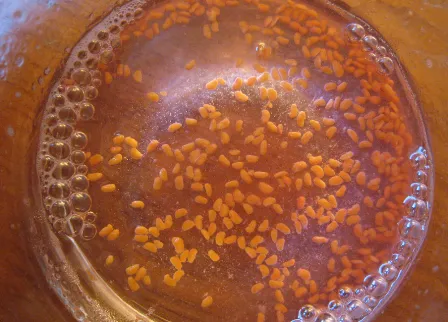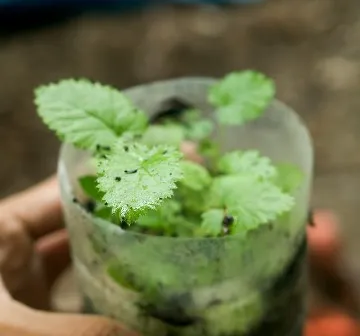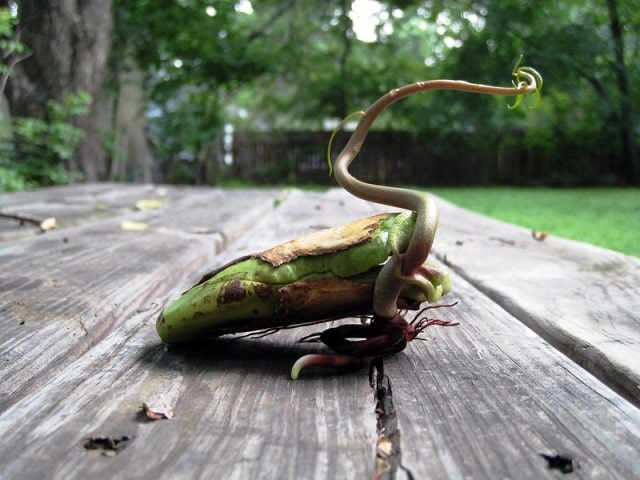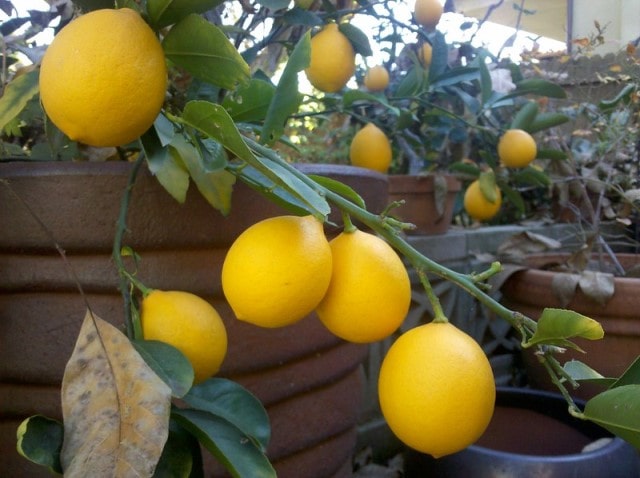Raspberries are not only deliciously sweet and tangy but also surprisingly easy to grow at home. Grow raspberries in the backyard or balcony garden and get plump, juicy raspberries. You can kickstart your raspberry-growing journey using store-bought fruit! I’ll guide you through the steps to transform those store-bought raspberries into thriving plants in your garden.
- Selecting the Right Raspberries:
- Start by choosing fresh, ripe raspberries from your local grocery store or farmer’s market. Look for plump, firm berries with no signs of mold or damage. Varieties like Heritage, Autumn Bliss, or Caroline are excellent choices for home cultivation.
- It’s crucial to select organic raspberries whenever possible to avoid potential exposure to pesticides, which could hinder the success of your gardening endeavor.
2. Extracting the Seeds:

- Once you have your raspberries, gently remove the seeds by crushing the berries in a bowl. Use a spoon to mash them, releasing the tiny seeds from the pulp.
- Next, pour the seed mixture into a fine-mesh strainer placed over another bowl. Rinse the seeds under cool water to separate them from the pulp.
- After rinsing, spread the seeds out on a paper towel to dry for a few hours. Make sure they’re evenly spaced to prevent clumping.
3. Preparing the Growing Medium:
- While the seeds are drying, prepare your growing medium. A well-draining potting mix enriched with organic compost works best for raspberry seedlings.
- Fill small seedling trays or pots with the prepared soil mixture, leaving a little space at the top for planting the seeds.
4. Planting the Seeds:
- Once the raspberry seeds are dry, carefully sow them onto the surface of the soil in your seedling trays or pots. Gently press them into the soil, but avoid burying them too deep.
- Mist the soil surface lightly with water to moisten it. Cover the trays or pots with plastic wrap or a clear plastic lid to create a mini greenhouse effect, retaining moisture and warmth.
5. Providing Optimal Growing Conditions:
- Place the trays or pots in a warm, sunny location, such as a windowsill or under a grow light. Raspberries thrive in full sun, so ensure they receive at least 6-8 hours of direct sunlight daily.
- Keep the soil consistently moist but not waterlogged. Avoid overwatering, as it can lead to root rot. Check the soil regularly and water when the top inch feels dry to the touch.
6. Transplanting Seedlings:

- As the raspberry seedlings grow and develop true leaves, they’ll eventually outgrow their seedling trays or pots. At this stage, carefully transplant them into larger containers or directly into the garden.
- Choose a site in your garden with well-draining soil and good air circulation. Space the transplants about 2-3 feet apart to allow room for growth and airflow.
7. Providing Support and Maintenance:
- Raspberry plants benefit from support structures like trellises or stakes to keep their sprawling canes upright. Install these structures early to avoid damaging the plants later.
- Throughout the growing season, monitor the plants for signs of pests or diseases. Prune away any damaged or diseased foliage promptly to maintain plant health.
- Fertilize the plants sparingly with a balanced organic fertilizer to provide essential nutrients for growth and fruit production.
8. Harvesting Your Homegrown Raspberries:

- With proper care and attention, your raspberry plants will reward you with a bountiful harvest in their second year of growth. Raspberries typically produce fruit on two-year-old canes.
- Harvest ripe raspberries when they easily detach from the plant with a gentle tug. Enjoy them fresh or use them in delicious recipes like jams, pies, or smoothies.
FAQs
Q: Can I use frozen raspberries to extract seeds for planting? A: Yes, you can use frozen raspberries to extract seeds for planting. Allow the berries to thaw slightly before crushing them to extract the seeds.
Q: How long does it take for raspberry seeds to germinate? A: Raspberry seeds typically germinate within 3-6 weeks, though it can vary depending on factors like temperature and soil moisture.
Q: Can I grow raspberries indoors? A: Yes, you can grow raspberries indoors, especially if you have a sunny window or use grow lights to provide adequate light. Choose dwarf or compact raspberry varieties for indoor cultivation.
Q: Do raspberry plants require a lot of maintenance? A: Raspberry plants are relatively low-maintenance but require regular watering, pruning, and fertilizing to thrive. Additionally, providing support structures like trellises or stakes is essential to keep the canes upright.
Q: When is the best time to plant raspberry seeds? A: Raspberry seeds can be planted indoors any time of the year. However, starting them indoors in late winter to early spring allows the seedlings to be transplanted outdoors in spring after the last frost date.
Q: How long does it take for raspberry plants to produce fruit? A: Raspberry plants typically produce fruit in their second year of growth. However, some varieties may start producing a small harvest in their first year.
Q: Are raspberries susceptible to any pests or diseases? A: Yes, raspberries can be susceptible to pests like aphids, spider mites, and raspberry cane borers, as well as diseases like raspberry mosaic virus and powdery mildew. Regular monitoring and proper care can help prevent and manage these issues.
Conclusion: Growing raspberries from store-bought fruit is not only a fun and rewarding gardening project but also a sustainable way to enjoy homegrown berries. By following these simple steps, you can transform those store-bought raspberries into thriving plants that will provide you with an abundant harvest for years to come. So why wait? Get started on your raspberry-growing adventure today and savor the sweet taste of success in your own backyard!
MORE POSTS: How to grow kiwi from store bought fruit?




